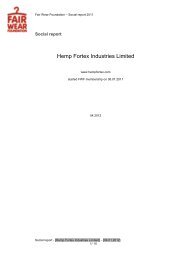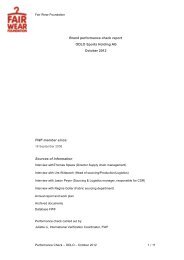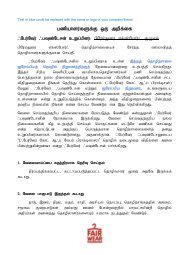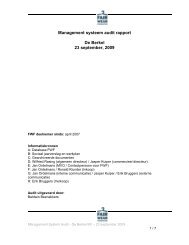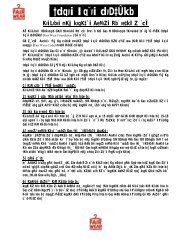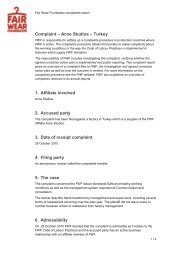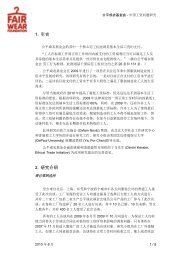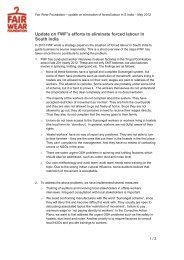Background Study Tirupur - Fair Wear Foundation
Background Study Tirupur - Fair Wear Foundation
Background Study Tirupur - Fair Wear Foundation
Create successful ePaper yourself
Turn your PDF publications into a flip-book with our unique Google optimized e-Paper software.
sociation (TEA) Executive Secretary Mr. Ramanathan stressed the need to tackle<br />
the high out-turn of workers from one company to another, and the low manmachine<br />
per capita usage of imported machineries. Another example of how this<br />
model impedes further development of the industry: ‘Last year, managers from<br />
Sara Lee, the leading global lingerie brand, visited his factory (Astro Apparel) and<br />
were impressed by the facilities. Not only were they willing to make him an approved supplier,<br />
they were ready to place an immediate order that would keep his factory running for the<br />
entire year. The only requirement was that Venkat would have to shut his factory by 6 p.m. -<br />
in keeping with Sara Lee's good production practices. Now, this was a win-win arrangement.<br />
His calculations showed that his workers would earn far more if they worked fewer hours, but<br />
for the entire year. The workers couldn't see the point, so much so that Venkat had to eventually<br />
decline the order from Sara Lee. "The labourers' attitude in <strong>Tirupur</strong> is just not conducive.<br />
By stepping up productivity, we can produce 150% with the same machines and the<br />
labourers will also earn more. But it is just too difficult to convince them" (Businessworld 5-4-<br />
2004)<br />
There is a marked difference between the position of tailors and cutters, and that of other<br />
less skilled workers. Tailors and cutters often operate as semi self-employed, hiring one self<br />
out to the highest bidder. They tend to have a greater preference for piece rates and less for<br />
permanent contracts, although one should be careful to generalise.<br />
In <strong>Tirupur</strong>, tailors and cutters are mostly male, contrarily to for example the Bangalore situation.<br />
In general, the garment industry in <strong>Tirupur</strong> is less feminised than elsewhere.<br />
3.2. Labour situation and wages<br />
Living and working conditions of garment workers in general are bad. In the meetings several<br />
problems concerning labour conditions were mentioned; wages are low and often based on a<br />
piece rate system, workers have to work long hours in order to make a living. Complex<br />
chains of subcontracting are present within the country and the sector is characterized by a<br />
high number of small units. Even in larger factories minimum wages are not paid.” (CCC: Cooperation<br />
between the Clean Clothes Campaign and Indian Trade unions and NGOs, 2001)<br />
There is a strict hierarchy of jobs. Knitting machine attendants (in charge of the circular knitting<br />
machines and responsible for the production of knitted fabric), cutters, and machinists in<br />
the CMT units are all regarded as skilled jobs and the rates of pay are relatively high. There<br />
are three main kinds of stitching or sewing machine: overlock, chainlock and flatlock. In addition<br />
there are separate machines for button holing (sometimes subcontracted out to workshops)<br />
sewing on buttons and labels. There are also hydraulic presses for flattening the<br />
garments before packing. All these workers are assisted by (unskilled) helpers. There are<br />
women machinists, but in contrary to for instance Bangalore, there are not a majority in <strong>Tirupur</strong>.<br />
Ironmasters are also regarded as skilled workers as are packers, this may presumable<br />
reflect the importance of these elements for export orders.<br />
Trimmers and checkers, hand folders/bundlers and label putters are regarded as semiskilled.<br />
These jobs are nearly all performed by women.<br />
These differences are reflected in the TEA wage agreement (see 4.5)<br />
The strict hierarchy of jobs off course hinders internal flexibilisation, where workers can take<br />
over each others jobs and again re-inforces the dependency on the model of external flexibilisation<br />
(hiring and firing persons on a day to day basis).<br />
There is a marked difference between the position of tailors and cutters, and that of other,<br />
less skilled workers. Tailors and cutters often operate as semi self-employed, hiring one self<br />
out to the highest bidder. They tend to have a greater preference for piece rates and less for<br />
permanent contracts, although one should be careful to generalise.<br />
In <strong>Tirupur</strong>, tailors and cutters are mostly male, contrarily to for example the Bangalore situation.<br />
In general, the garment industry in <strong>Tirupur</strong> is less feminised than elsewhere.<br />
17




